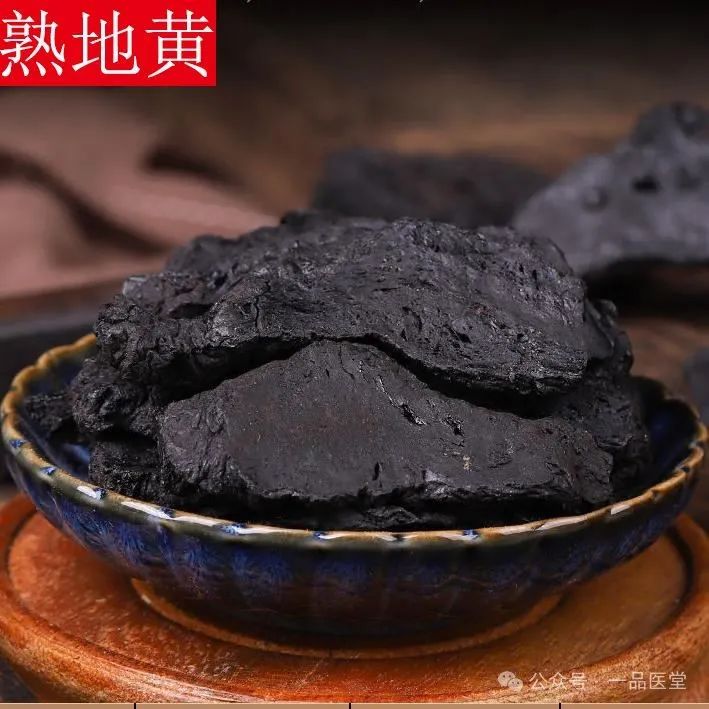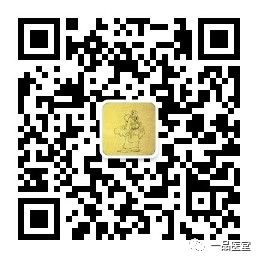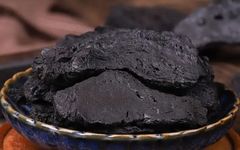
Shú Dì Huáng (Rehmannia Root) is derived from the tuberous roots of the herbaceous plant Rehmannia glutinosa, belonging to the Scrophulariaceae family, which is processed through steaming. It has a sweet and warm nature, entering the liver and kidney meridians. Its properties are nourishing and moistening, making it an excellent tonic for replenishing blood and nourishing yin, serving as a crucial medicine for replenishing kidney essence. For those with deficiencies in liver and kidney essence and blood, it is indispensable. As stated in the “Bencao Zhengyi”: “For all meridians with yin and blood deficiency, Shú Dì is essential.” Master Xu has profound insights into the medicinal properties and applications of this herb in clinical practice.
1. For blood deficiency, combine with Lù Jiǎo Jiāo (Deer Antler Glue) for enhanced blood replenishment. Shú Dì Huáng is sweet and warm, entering the blood, and is particularly effective in nourishing blood and supporting the liver, possessing strong blood-replenishing power. Thus, “Yàopǐn Huàyì” states: “Shú Dì… specifically enters the liver to replenish blood.” The “Bencao Zheng” also describes it as “a good agent for replenishing blood and nourishing the middle.” Clinically, for conditions such as chronic illness, postpartum recovery, chronic wasting diseases, and aplastic anemia, which manifest as pale complexion, dizziness, palpitations, insomnia, forgetfulness, and menstrual irregularities in women, it is often used in combination with Lù Jiǎo Jiāo. Master Xu believes that Shú Dì nourishes blood and is tranquil in nature; Lù Jiǎo Jiāo, being a product of blood and flesh, can both nourish essence and blood while warming yang and benefiting the kidneys, thus having the dual function of nourishing yin and yang, with a dynamic aspect within its tranquility. The combination of these two not only provides substantial blood replenishment but also harmonizes the dynamic and static aspects, enhancing their effects.
2. For yin deficiency, combine with Shān Yú Ròu (Cornus Fruit) to primarily nourish the liver and kidneys. Shú Dì Huáng is sweet, warm, and rich in flavor, with a soft and moist texture. It “calms the five organs… nourishes true yin, and fills the bone marrow, making it a sacred medicine.” It is said that “its rich flavor is a turbid essence, used to nourish the liver and kidneys for those with insufficient yin, replenishing them with flavor” (“Yàopǐn Huàyì”). In clinical practice, for chronic nephritis, chronic hepatitis, hypertension, diabetes, and other conditions characterized by weakness, soreness in the lower back and knees, tinnitus, dizziness, and nocturnal emissions due to insufficient liver and kidney essence and blood, it is often combined with Shān Yú Ròu. The master believes that Shú Dì Huáng has a pure and tranquil flavor, strongly nourishing the yin of the liver and kidneys; Shān Yú Ròu is slightly warm and moist, entering the liver and kidney meridians, capable of nourishing the yin of the liver and kidneys while also warming and supplementing kidney yang, making it a key medicine for harmonizing yin and yang. The combination of these two not only strengthens the yin of the liver and kidneys but also prevents the stagnation that yin tonics may cause.
3. For yin deficiency with excess heat, combine with Zhī Mǔ (Anemarrhena) and Huáng Bǎi (Phellodendron) to nourish yin and clear heat while benefiting the kidneys. The kidneys house the original yin and yang; when kidney yin is deficient, yang heat may become excessive, leading to symptoms such as bone steaming, five hearts heat, night sweats, and nocturnal emissions. Treatment must both nourish yin to address the root cause and clear heat to address the symptoms. Shú Dì Huáng easily enters the kidneys, making it an excellent tonic for filling essence and nourishing yin. When combined with Zhī Mǔ and Huáng Bǎi, it nourishes yin and clears heat, thus restoring balance between yin and yang. Therefore, the “Bencao Zheng” states: “Shú Dì Huáng is neutral in nature, with a pure and tranquil flavor, thus able to nourish the true yin of the five organs… For yin deficiency with rising heat, only Shú Dì’s weight can bring it down; for yin deficiency with dryness and agitation, only Shú Dì’s tranquility can calm it.”
4. Used to treat deficiency asthma. The kidneys govern the reception of qi; when kidney deficiency occurs, the ability to receive qi is compromised, leading to symptoms such as shallow breathing and wheezing. Additionally, kidney yin is the root of all bodily fluids; when water is deficient, it can lead to dryness in the lungs, causing cough and wheezing. Furthermore, the kidneys govern water; when kidney deficiency leads to water overflowing, phlegm can obstruct the lungs, resulting in cough with phlegm. Master Xu believes that Shú Dì Huáng, being sweet and heavy, enters the kidney meridian, has the ability to nourish the lungs and kidneys, and stabilize breathing. In this regard, the ancient scholar Fang Rén Yuān also pointed out: “Shú Dì is best at resolving phlegm due to deficiency, as it can fill and replenish kidney qi, transforming formless phlegm; do not fear its heavy nature.” For chronic bronchitis, emphysema, and other conditions diagnosed in TCM as lung and kidney yin deficiency with excessive cough and phlegm, the master often prefers to use Jīn Shuǐ Liù Jūn Jiān with modifications. Among them, Er Chen Tang is used to transform phlegm; Dāng Guī (Angelica) is used to stop cough, as stated in the “Bencao”: “It governs cough and counterflow qi”; Shú Dì Huáng replenishes the kidneys and stabilizes breathing to treat deficiency asthma. To enhance efficacy, it is often combined with Wǔ Wèi Zǐ (Schisandra), Shān Yú Ròu, and Bǔ Gǔ Zhī (Psoralea) to further strengthen kidney tonification and stabilize breathing.
5. Used to treat lower abdominal pain. It is generally believed that the spleen governs the upper abdomen, and abdominal pain is often treated based on spleen and stomach deficiency and cold; however, treatment is often ineffective. At this time, attention should be paid to kidney essence deficiency, as the lower abdominal collaterals lose nourishment from essence and blood, leading to subtle pain. Thus, the “Bencao Fengyuan” states: “Pain below the navel belongs to kidney essence injury.” Clinically, for lower abdominal pain due to kidney essence deficiency and yang deficiency, Master Xu prefers to use Jīn Guì Shèn Qì Wán, where Shú Dì Huáng is used, often yielding effective results. Shú Dì Huáng is warm and moist in nature, capable of both replenishing essence and blood while nourishing the meridians. When combined with Fù Zǐ (Aconite), Ròu Guì (Cinnamon), and Shān Yú Ròu, which warm yang and benefit yin, the efficacy is even better. As Zhang Yuán Sù stated: “Pain below the navel belongs to the kidney meridian; only Shú Dì can alleviate it, as it is a medicine that opens the kidneys.” Shú Dì Huáng nourishes yin and replenishes blood, and its effects are indeed significant; however, its sticky nature can easily promote dampness and affect digestion, so it is advisable to use it in conjunction with Shā Rén (Amomum) and Chén Pí (Aged Tangerine Peel) to aromatically move qi and awaken the stomach.Due to its sticky nature, it is not recommended for those with weak spleen and stomach, abdominal distension, reduced appetite, and loose stools.

Clinical Applications of Guì Zhī Tāng (Cinnamon Twig Decoction) (2)
Bái Zhú (Atractylodes)

